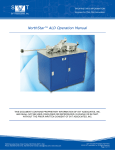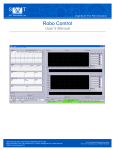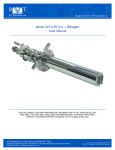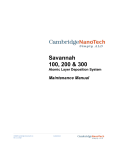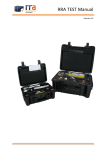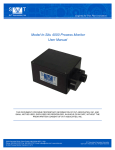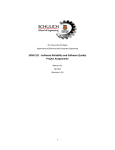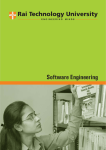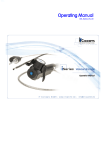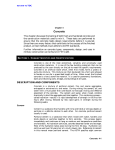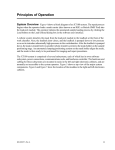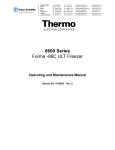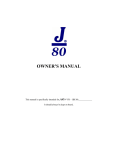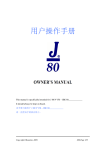Download ALD Model 503 Manual _Final
Transcript
SVT Associates ALD Model 503 User Manual THIS DOCUMENT CONTAINS PROPRIETARY INFORMATION OF SVT ASSOCIATES, INC. AND SHALL NOT BE USED, DISCLOSED OR REPRODUCED, IN WHOLE OR IN PART, WITHOUT THE PRIOR WRITTEN CONSENT OF SVT ASSOCIATES, INC. 7620 Executive Drive | Eden Prairie, MN 55344-3677 | USA Phone: 952-934-2100 | Fax: 952-934-2737 | Email: [email protected] | www.svta.com ALD Model 503 Version 1.0 4/14 SVT Associates Proprietary Information © 2014 SVT Associates, Inc. All Rights Reserved Page 1 of 34 Table of Contents General Health and Safety Concerns ....................................................................................................... 4 ALD System Safety .................................................................................................................................. 5 Safety Features ..................................................................................................................................... 5 Precursor Bubbler Handling .................................................................................................................. 5 Specifications ........................................................................................................................................... 7 Description of Parts .................................................................................................................................. 7 Console .................................................................................................................................................... 8 Communications Hub ............................................................................................................................ 8 Pneumatic Distribution Manifold ........................................................................................................... 8 Leveling Pads ....................................................................................................................................... 8 Power Outlets and Electrical Feedthroughs .......................................................................................... 9 Water Flow Indicators ........................................................................................................................... 9 RF Plasma Power Supply ..................................................................................................................... 9 Electronics Enclosure ............................................................................................................................. 10 Control Electronics .............................................................................................................................. 10 Power Electronics ............................................................................................................................... 10 Feedthroughs ...................................................................................................................................... 10 Electronics Enclosure Fan .................................................................................................................. 10 Emergency Stop Switch ...................................................................................................................... 10 Growth Chamber .................................................................................................................................... 11 Gas Delivery Port ................................................................................................................................ 11 Pumping Port ...................................................................................................................................... 11 Inner and Outer Chambers ................................................................................................................. 11 Inner Chamber Wall Heaters .............................................................................................................. 12 Outer Chamber Wall Water Cooling ................................................................................................... 12 Chamber Viewports ............................................................................................................................ 12 Pumping System .................................................................................................................................... 13 Pumping Manifold ............................................................................................................................... 13 Pump Isolation Valve .......................................................................................................................... 13 Chamber Pressure Gauge .................................................................................................................. 13 Exhaust Manifold Heater ..................................................................................................................... 13 Hot Trap .............................................................................................................................................. 14 Particulate Filter .................................................................................................................................. 14 Vacuum Pump .................................................................................................................................... 14 Gas Enclosure ........................................................................................................................................ 15 Gas Manifold and Heater .................................................................................................................... 15 ALD Valves ......................................................................................................................................... 15 7620 Executive Drive | Eden Prairie, MN 55344-3677 | USA Phone: 952-934-2100 | Fax: 952-934-2737 | Email: [email protected] | www.svta.com ALD Model 503 Version 1.0 4/14 SVT Associates Proprietary Information © 2014 SVT Associates, Inc. All Rights Reserved Page 2 of 34 Carrier Gas Lines ................................................................................................................................ 15 Gas Mass Flow Controllers ................................................................................................................. 15 Gas Isolation Valves ........................................................................................................................... 15 Gas Enclosure Exhaust Fan ............................................................................................................... 16 Gas Enclosure Exhaust Connection ................................................................................................... 16 Gas Enclosure Door Interlock ............................................................................................................. 16 Precursor Heaters and Thermocouples .............................................................................................. 17 Before Deposition: Preparing the ALD ................................................................................................... 19 Turn on the System ............................................................................................................................. 19 Heat up the Bubblers .......................................................................................................................... 19 Select an ALD Mode of Operation ...................................................................................................... 19 Set up a Recipe .................................................................................................................................. 20 Recipe Precautions ............................................................................................................................. 21 Vent the Chamber ............................................................................................................................... 22 Open the Chamber ............................................................................................................................. 23 Pump-down and Heater Ramp-up ...................................................................................................... 24 Standard Operating Procedure: Running an Automated Recipe............................................................ 25 Standard Operating Procedure: Unloading Samples ............................................................................. 26 Additional Software Information .............................................................................................................. 27 Maintenance Procedures........................................................................................................................ 28 Mechanical Pump Safety/Maintenance ............................................................................................... 28 Chamber Cleaning .............................................................................................................................. 28 Shutdown Procedures ............................................................................................................................ 29 Emergency Shutdown Procedure ....................................................................................................... 29 Complete System Shutdown for Non-Emergencies ............................................................................ 29 ALD System Shutdown for Extended Period of Time ......................................................................... 29 Appendix: System Diagrams .................................................................................................................. 30 Process Gas and Pumping Diagram ................................................................................................... 30 ALD Inside Chamber Detailed Diagram .............................................................................................. 31 ALD Chamber Exploded View ............................................................................................................ 32 Warranty and Limitations of Remedies................................................................................................... 33 Return Policy .......................................................................................................................................... 33 Returning Equipment for Repair or Servicing ......................................................................................... 34 7620 Executive Drive | Eden Prairie, MN 55344-3677 | USA Phone: 952-934-2100 | Fax: 952-934-2737 | Email: [email protected] | www.svta.com ALD Model 503 Version 1.0 4/14 SVT Associates Proprietary Information © 2014 SVT Associates, Inc. All Rights Reserved Page 3 of 34 General Health and Safety Concerns Normal operation of the Atomic Layer Deposition (ALD) tool is not dangerous and allows user to conduct deposition onto substrates in a safe and reliable manner. To ensure that the ALD and its components remain under safe operating conditions, the original ALD components should not be modified in any way. Unsafe operation of the ALD may expose users to the potential hazards listed below. Dangerous Gases Hazard. The ALD operates by using pyrophoric and potentially dangerous precursor and process gases such as trimethylaluminium (TMA). The user must follow safe loading and unloading procedures to prevent self-injury or damage to the ALD. Low Ventilation Space Asphyxiation Hazard. The ALD performs the venting process by flowing chemically inert and nontoxic nitrogen gas into a properly purged chamber. While the system is designed to prevent delivery of excess nitrogen to the chamber, in the event of valve failure then a continuously running stream of nitrogen can displace oxygen from the ALD operation area. If sufficient oxygen is displaced then users may become asphyxiated or suffocated. Ensure that the ALD is operated only in lab spaces with adequate ventilation and correctly configured exhaust lines. Electrical Power Shock or Burn Hazard. The ALD uses high D/C and 60Hz A/C electrical power, which poses a shock, and/or burn hazard if users contact powered leads within the ALD chamber, enclosures or console. Users must not modify or remove any portion of the ALD chamber, enclosures, console, and/or the power lines. Mechanical Lid Pinch Point Hazard. The ALD lid is heavy in order to mechanically seal the ALD chamber. Users must take care while closing or opening the ALD to avoid pinching fingers, hands, or any other foreign materials between the lid and main chamber. Thermal Burn Hazard. The exterior of the ALD is designed to remain near room temperature, however interior components are capable of reaching high temperatures. Users must exercise caution when opening the chamber, enclosures, or console. Certain components inside may have hot surfaces which can present a burn hazard. 7620 Executive Drive | Eden Prairie, MN 55344-3677 | USA Phone: 952-934-2100 | Fax: 952-934-2737 | Email: [email protected] | www.svta.com ALD Model 503 Version 1.0 4/14 SVT Associates Proprietary Information © 2014 SVT Associates, Inc. All Rights Reserved Page 4 of 34 ALD System Safety Safety Features ALD Model 503 has a variety of safety features to handle possible emergency situations 1) Growth chamber interlock – If the growth chamber has any leaks or the pressure rises above a set level (say 5 Torr) in the middle of the growth process, the controller and the pneumatic valve software can automatically shut down and isolate all ALD valves and MFCs. This prevents precursor vapor or byproducts from leaking into or out from the growth chamber if the system is vented. Emergency stop button – There is a manual stop button. In case of an emergency, push the emergency stop button. All ALD valves, MFCs and the throttle valve will shut down and the growth chamber is sealed to prevent any possible precursor vapor leaking outside. The emergency stop button also turns off the pump and turns off all of the heaters. Continuously exhausted gas enclosure – There is an exhaust port for the gas enclosure. All precursor bubblers are located inside of the gas enclosure. The exhaust can be connected to a separate vent line to contain the vapor from leaking outside in case of precursor bubbler leakage. Make sure the doors on the enclosure are properly closed at all the times to maximize the exhaust flow. Gas enclosure door interlock – The gas enclosure is outfitted with a door interlock. When the gas enclosure door is opened, the interlock seals the gas isolation valves to disable the flow of precursor gases. This prevents you from exposure to dangerous gases if there is a leak. It is strongly recommended that you install a separate gas sensor/alarm system working for a specific vapor material. For example, if you work with chlorinated gases such as SiCl4, an HCl sensor should be installed inside the gas enclosure or near the growth chamber to reduce risk of exposure. Precursor Bubbler Handling Concerning precursor bubblers, you are ultimately responsible for your own safety. Due to the variety of gases the ALD Model 503 system can accommodate, you need to develop your own safety procedures for connecting and disconnecting precursor bubblers. The following paragraphs describe a brief introduction to common concerns for some precursor materials. The sources of the precursor chemicals are generically referred to as “bubblers”. A bubbler passes a carrier gas through a liquid chemical to pick up the chemical. Alternatively, for high vapor pressure materials, it is not necessary to pass the carrier gas through the liquid, but simply have a cylinder of the material, at a controlled temperature, which feeds directly into the ALD valve, called direct vapor drawing. Know the nature of the precursors with which you are working and read the Safety Data Sheet (SDS), that is available from the chemical supplier. These documents are internationally required by the United Nations Globally Harmonized System of Classification and Labelling of Chemicals (GHS). Many ALD precursors are flammable, corrosive or toxic. For example, TMA is pyrophoric; it burns upon exposure to air. It is thus crucial to handle the precursor bubblers safely, which includes knowing how to connect and disconnect a bubbler to the ALD valve and how to store a bubbler if it is not in use. When connecting a filled bubbler to an ALD valve make sure to wear a proper mask or respirator. Double check to ensure the manual on/off valve on the bubbler is closed tightly before loosening the VCR fitting. 7620 Executive Drive | Eden Prairie, MN 55344-3677 | USA Phone: 952-934-2100 | Fax: 952-934-2737 | Email: [email protected] | www.svta.com ALD Model 503 Version 1.0 4/14 SVT Associates Proprietary Information © 2014 SVT Associates, Inc. All Rights Reserved Page 5 of 34 Loosen the VCR sealing cap in a chemical hood with proper vent system. Ideally there should be a gas sensor nearby to check whether the bubbler is leaking. Transfer the bubbler to the ALD gas enclosure, connect to the ALD fitting, and tighten the connection. Make sure the line between the ALD valve and the bubbler is purged, by opening the ALD valve for a short period of time before you open the manual on/off switch (assuming the system is under vacuum). If the base pressure is not recovered and is higher than the original point, there could be leakage from the bubbler connecting area. When disconnecting a filled bubbler from an ALD valve, make sure to wear proper mask or respirator, clear the ALD area of irrelevant personnel; double check to make sure the manual on/off valve on the bubbler is closed tightly before loosening the VCR fitting; purge the line between ALD valve and the bubbler to remove any residual precursor in the line; loosen the connecting fitting and cap the bubbler immediately with a VCR cap and gasket. When a filled precursor bubbler is taken out of use, it is the best to put it back in the original package and store in a safe, properly vented area or chemical hood area. Make sure the on/off valve is tightly sealed and the VCR cap is tightened. 7620 Executive Drive | Eden Prairie, MN 55344-3677 | USA Phone: 952-934-2100 | Fax: 952-934-2737 | Email: [email protected] | www.svta.com ALD Model 503 Version 1.0 4/14 SVT Associates Proprietary Information © 2014 SVT Associates, Inc. All Rights Reserved Page 6 of 34 System Description SVT Associates’ ALD Model 503 is a versatile research deposition tool for thermal ALD. With up to four precursor lines and a hot wall deposition chamber, a wide range of applications may be performed from a single system. The system is integrated with our RoboALD automation software, which increases process reproducibility. Specifications Outer Chamber Volume ............................................................................... 92.5 L Inner Chamber Volume ............................................................................. 100.5 L Chamber Base Pressure .................................................................... <5.0E-3 Torr Process Gas Manifold Heating to ............................................................... 200 °C Pumping Manifold Heating to ..................................................................... 150 °C Hot Trap Heating to……….…………………………………… ...................... 400 °C Sample Heating to……….…………………………………… ........................ 500 °C Description of Parts This section is intended to give a brief overview of each of the components that make up SVT Associates’ ALD Model 503 system. Its intent is to familiarize you with the terms and locations of each of the components referred to in the rest of this manual. The main parts are identified below. 7620 Executive Drive | Eden Prairie, MN 55344-3677 | USA Phone: 952-934-2100 | Fax: 952-934-2737 | Email: [email protected] | www.svta.com ALD Model 503 Version 1.0 4/14 SVT Associates Proprietary Information © 2014 SVT Associates, Inc. All Rights Reserved Page 7 of 34 Console The Console houses various control electronics, process gas delivery system, and pumping hardware. In addition, the Console provides a physical support structure for the ALD Chamber, Gas Enclosure, and Electronics Enclosure. Communications Hub This communications hub is the USB-to-serial interface from the computer to serial devices. This hub supplements the main control electronics found in the electronics enclosure. Pneumatic Distribution Manifold Converts the control signal from the main control electronics into control over valve state. Provides air actuation to all pneumatic valves on the system. Leveling Pads The leveling pads can be raised off the floor to facilitate movement of the enclosure using the chamber wheels. The leveling pads can also be lowered to the floor to lift the wheels from the ground and ensure that the system remains stationary. 7620 Executive Drive | Eden Prairie, MN 55344-3677 | USA Phone: 952-934-2100 | Fax: 952-934-2737 | Email: [email protected] | www.svta.com ALD Model 503 Version 1.0 4/14 SVT Associates Proprietary Information © 2014 SVT Associates, Inc. All Rights Reserved Page 8 of 34 Power Outlets and Electrical Feedthroughs Located at the back of the console is a small panel of four electrical power outlets. The standard 3-terminal outlets are intended to facilitate addition of aftermarket ALD components such as a residual gas analyzer. As shown to the right, the electrical outlets are located below electrical feedthroughs which route wires into the electronics enclosure. Water Flow Indicators The outer chamber wall is capable of water-cooling. You can monitor water flow through the system by checking the set of three water flow indicators located just behind the console door. Shutoff valves are included to allow manual shutoff of water flow. RF Plasma Power Supply The RF Plasma Power Supply can be mounted on the left panel of the console. The power supply is controlled remotely by using the Robo Control software, however the front panel of the power supply can supplement the information available to you. Note: This component is optional. 7620 Executive Drive | Eden Prairie, MN 55344-3677 | USA Phone: 952-934-2100 | Fax: 952-934-2737 | Email: [email protected] | www.svta.com ALD Model 503 Version 1.0 4/14 SVT Associates Proprietary Information © 2014 SVT Associates, Inc. All Rights Reserved Page 9 of 34 Electronics Enclosure The electronics enclosure is unlocked and can be opened by unlocking the two black turnkeys using a coin and then the lid swings up from the bottom using the hinge at the top. The electronics enclosure lid does not have an interlock. Control Electronics 1) The electronics enclosure houses control hardware for the ALD system. This hardware includes a National Instrument Compact Fieldpoint connected to several more specialized analog and digital modules. Power Electronics 2) The electronics enclosure also houses the electronics to deliver electrical power to run the control electronics, heaters, and valves for the ALD system. Feedthroughs 3) Cables and wires are fed from the console into the electronics enclosure through these feedthroughs. Electronics Enclosure Fan 4) The electronics enclosure fan is designed to prevent overheating of electronics by continuously introduce room temperature air. As shown here, the intake port is on the bottom surface of the box located to the right of the power electronics. Emergency Stop Switch In the event of an emergency, you may quickly shut down the ALD system by using the emergency stop switch. As discussed previously in the safety section of this manual, the Emergency Off Switch halts flow of process gas and quickly shuts down many parts of the ALD system to allow you to safely deal with the emergency and return the ALD system to operation. 7620 Executive Drive | Eden Prairie, MN 55344-3677 | USA Phone: 952-934-2100 | Fax: 952-934-2737 | Email: [email protected] | www.svta.com ALD Model 503 Version 1.0 4/14 SVT Associates Proprietary Information © 2014 SVT Associates, Inc. All Rights Reserved Page 10 of 34 Growth Chamber The Growth Chamber is where samples become coated by ALD. The outer chamber contains an inner chamber, which can be heated to temperatures that are suitable for deposition. Inside of the inner chamber are racks for loading samples for deposition. A more detailed diagram of the growth chamber can be found in the Appendix at the end of this manual. Gas Delivery Port 1) When viewed from the front, you can see the high conductance gas inlet port on the left side of the chamber. Precursor and carrier gas is delivered to the chamber through this port. Pumping Port 2) The high conductance pumping port is located on the right side of the chamber, opposite the gas delivery port for optimum process uniformity. This port connects to both the regular pumping path and the balance pumping path. The balance pumping path allows manual adjustment of a small continuous flow for ALD soak-mode. Inner and Outer Chambers The chamber consists of an inner chamber that is completely enclosed by an outer chamber. The inner chamber is sealed with an inner chamber lid. This enables a sealing gas flow to better confine process gases to the inner chamber. In the pumping system, a balance valve and needle valve connects the two chambers allowing you to adjust the pressure differential. 7620 Executive Drive | Eden Prairie, MN 55344-3677 | USA Phone: 952-934-2100 | Fax: 952-934-2737 | Email: [email protected] | www.svta.com ALD Model 503 Version 1.0 4/14 SVT Associates Proprietary Information © 2014 SVT Associates, Inc. All Rights Reserved Page 11 of 34 Inner Chamber Wall Heaters Heater elements mounted under the heat shield deliver heat to the inner chamber wall. Heaters are also located in the front lid and in the rear of the outer chamber. The hot inner chamber wall radiatively heats the sample trays. Thermocouples mounted to the inner chamber wall and inner tray provide feedback for closed loop temperature control. When opened, you can see the exposed heater elements on the front lid. Outer Chamber Wall Water Cooling The outer chamber wall is capable of being water cooled in order to minimize process sensitivity to changes in ambient temperature. Additionally the water-cooled outer chamber wall can be used as a safety feature to minimize the temperature of the exposed outer chamber even while the inner chamber is kept above 100 ºC. Chamber Viewports You can look directly into the chamber through viewports in the outer chamber lid and inner chamber lid. This allows you to confirm that a centrally located sample has not shifted position. 7620 Executive Drive | Eden Prairie, MN 55344-3677 | USA Phone: 952-934-2100 | Fax: 952-934-2737 | Email: [email protected] | www.svta.com ALD Model 503 Version 1.0 4/14 SVT Associates Proprietary Information © 2014 SVT Associates, Inc. All Rights Reserved Page 12 of 34 Pumping System The Pumping System is designed to provide uniform, efficient, and reliable process pumping. The Pumping System is partially housed within the Console. A diagram of the complete gas path is located at the end of the manual. Pumping Manifold 1) Provides high conductance process pumping and flexibility to incorporate various options. For example a residual gas analyzer, or RGA, may be connected to the front-facing CF port (2). Pump Isolation Valve 2) The pneumatically actuated pump isolation valve is controlled through the ROBO software. In case of emergency, the pump isolation valve seals the chamber by working together with the gas source isolation valve located in the gas enclosure. Chamber Pressure Gauge 3) Baratron Pressure Gauge has an operating range of 10 mTorr to 10 Torr, and is used to read the pressure of the Inner Chamber. Exhaust Manifold Heater 4) The gray insulation covering the pumping manifold (1) obscures an exhaust heater that is used to prevent deposition of excess process gas. Also covered by the gray insulation is a thermocouple to provide closed loop temperature control. 7620 Executive Drive | Eden Prairie, MN 55344-3677 | USA Phone: 952-934-2100 | Fax: 952-934-2737 | Email: [email protected] | www.svta.com ALD Model 503 Version 1.0 4/14 SVT Associates Proprietary Information © 2014 SVT Associates, Inc. All Rights Reserved Page 13 of 34 Hot Trap 5) Contained within the console is the hot trap. The hot trap features fixed power control with reference thermocouple temperature indication. The hot trap breaks down harmful materials that are used, or created in the growth chamber. The hot trap must be operating at rated temperature whenever precursors are pulsed into the system. Failure to properly operate the hot trap could cause damage to the pumping system and void warranty. Particulate Filter 6) The particulate filter is located after the hot trap, and before the Vacuum pump. The particulate filter captures any particulates created in the Process Chamber or Hot Trap, and prevents the oil from backstreaming from the vacuum pump. Vacuum Pump Oxygen service rotary vane vacuum pump is provided with exhaust and oil filtration upgrade. SVT Associates recommends the vacuum pump exhaust should be connected to your facilities ventilation system. 7620 Executive Drive | Eden Prairie, MN 55344-3677 | USA Phone: 952-934-2100 | Fax: 952-934-2737 | Email: [email protected] | www.svta.com ALD Model 503 Version 1.0 4/14 SVT Associates Proprietary Information © 2014 SVT Associates, Inc. All Rights Reserved Page 14 of 34 Gas Enclosure The Gas Enclosure houses the high conductance Process Gas Delivery System. The Process Gas Delivery System is designed to provide uniform precursor coverage. The gas enclosure lid has an interlock that seals the gas isolation valves to disable flow of precursor gases when the gas enclosure is open. The gas enclosure can be opened by unlocking the two black turnkeys using a coin, then the lid can be opened at the right side using its hinge on the left. Gas Manifold and Heater 1) The gas manifold has connections for up to four ALD valves. The gas manifold includes a heater element and thermocouple to provide closed loop temperature control to 200 ºC. To better control the temperature of the gas manifold, it is wrapped in gray insulation. ALD Valves 2) As shown in (2), four fast acting ALD valves are included in SVT Associates’ ALD Model 503. ALD valves can be baked up to 200 ºC. Carrier Gas Lines 3) Common carrier gas lines provide continuous flow of carrier gas through all ALD valves. Continuous flow of carrier gas improves the efficiency of purging precursor gases. Gas Mass Flow Controllers 4) Process gas is delivered to the chamber using mass flow controllers (4). The mass flow controllers measure gas flow and also self-adjust to deliver a predetermined gas flow set point. You specify the set point by using the Robo software. Gas Isolation Valves 5) The process gas isolation valves (5) are used as part of the emergency shutdown to isolate the chamber from flowing precursor gas. 7620 Executive Drive | Eden Prairie, MN 55344-3677 | USA Phone: 952-934-2100 | Fax: 952-934-2737 | Email: [email protected] | www.svta.com ALD Model 503 Version 1.0 4/14 SVT Associates Proprietary Information © 2014 SVT Associates, Inc. All Rights Reserved Page 15 of 34 Gas Enclosure Exhaust Fan Runs continuously, and ensures that dangerous gas does not accumulate inside the console. Some precursors can be damaged at elevated ambient temperatures. The exhaust fan assists in removing heat from the gas enclosure. Gas Enclosure Exhaust Connection A convenient connection is provided on the side of the console to connect to a facility ventilation system. Connection is for a 4 inch inside diameter hose. A minimum capacity of 100 CFM is recommended for the facility ventilation system. Gas Enclosure Door Interlock When properly implemented in Robo software, if the gas enclosure door is not closed, the interlock can seal the gas isolation valves to prevent the ALD system from operating. 7620 Executive Drive | Eden Prairie, MN 55344-3677 | USA Phone: 952-934-2100 | Fax: 952-934-2737 | Email: [email protected] | www.svta.com ALD Model 503 Version 1.0 4/14 SVT Associates Proprietary Information © 2014 SVT Associates, Inc. All Rights Reserved Page 16 of 34 Precursor Heaters and Thermocouples Customer-supplied precursor heaters and thermocouples are used to heat the precursor bubblers in order to raise the vapor pressure. Robo ALD control software supports feedback control for precursor heaters. For feedback control, the heaters and thermocouples must meet the following specifications: • Heater rated at 240 Volts, 40 watts • Thermocouple Type K, ungrounded with subminiature connector To attach precursor heaters, place the thermocouple so the end of probe is near the center of the heater. Note: Heaters not included Position sealed precursor container centered on the heater. Fasten the heater on the precursor container so the leads are positioned out from the bottom of the precursor container. Follow appropriate safety procedures when mounting the precursor container. The precursor bubbler can be mounted by connecting to the VCR seals in the gas enclosure. Then connect the heater and thermocouple leads. 7620 Executive Drive | Eden Prairie, MN 55344-3677 | USA Phone: 952-934-2100 | Fax: 952-934-2737 | Email: [email protected] | www.svta.com ALD Model 503 Version 1.0 4/14 SVT Associates Proprietary Information © 2014 SVT Associates, Inc. All Rights Reserved Page 17 of 34 Background: ALD System Operation Atomic Layer Deposition (ALD) is a vapor phase technique that deposits thin films sequentially, atomic layer by layer. ALD has been well described in the literature. It is based on sequential reactions of vapor phase chemicals with the surface of the substrate. The reactions are self-limiting. The surface is first saturated with one chemical precursor, and the excess pumped away. It is then exposed to a second chemical precursor, and the excess is pumped away. The technique provides excellent coverage of topographical features. For more information on ALD, see review articles in the following literature: Atomic Layer Deposition: An Overview by Steven M. George, Chem. Rev. 2010, 110, 111–131 As an example of a thermal ALD process, Al2O3 can be deposited using precursors of trimethylaluminum (TMA) and water. Alternative recipes and recipes for other materials can be found in the literature. The substrate is introduced into the deposition chamber, then evacuated. The surface of the substrate is initially hydroxylated from exposure to the atmosphere. One cycle of the deposition sequence can be described as following two half reaction cycles. 1) TMA pulse is admitted into the chamber and allowed to react with hydroxyl groups on the surface. This reaction proceeds until the surface reaction reaches completion. The unreacted TMA is pumped away with the help of an inert carrier gas such as Nitrogen or Argon. A water pulse (H2O) is admitted into the chamber. The H2O reacts with the surface, removing the CH3 groups (CH4 (methane) is formed as a gaseous byproduct), creating Al-O-Al bridges, and passivating the surface with Al-OH once again on the surface. The unreacted H2O and gaseous byproduct CH4 are pumped away with the help of the inert carrier gas. These 4 steps of the cycle can be set up in a recipe as a loop. Each cycle produces up to ~1.1 Å (0.11 nm) of Al2O3 depending on temperature. The ALD process is distinct from Chemical Vapor Deposition (CVD) in that the reactions occur sequentially. CVD mode reactions occur when both reacting precursor chemicals arrive on the surface in the ALD chamber at the same time, and not sequentially. To avoid undesired spurious CVD reactions, it is critical that the purging steps be complete (sufficient time) and all excess precursor be pumped away before pulsing of the second precursor. Only one of the precursors should be exposed to the substrate at a time. CVD reactions in the ALD system will produce non-uniform and excessive deposits. 7620 Executive Drive | Eden Prairie, MN 55344-3677 | USA Phone: 952-934-2100 | Fax: 952-934-2737 | Email: [email protected] | www.svta.com ALD Model 503 Version 1.0 4/14 SVT Associates Proprietary Information © 2014 SVT Associates, Inc. All Rights Reserved Page 18 of 34 Before Deposition: Preparing the ALD Turn on the System Power up the system, pumps, and computer, start the Robo Control software program and turn on the system electronics. Prior to any use of chemical precursors, the Hot Trap should be on and operating. Leave the Hot Trap on during the use of precursors. Prior to flowing process gas, make sure the system has been properly outgassed: • Run the in-vacuum heaters at >100 ºC to outgas all internal surfaces • The precursor bubblers should be installed and any headspace between the manual shutoff valves and the ALD valves evacuated. Check and make sure the cooling water line o-rings for the Growth Chamber is sealing. Make sure the carrier gases are ready. Heat up the Bubblers Depending on precursor volatility, a bubbler sometimes has to be heated to certain temperatures to get sufficient vapor pressure (~1 Torr). Example Hf precursors that require bubbler heating include TDMAH, TEMAH and TDEAH. You should monitor the key properties such as working temperature, decomposition temperatures, and maximal ALD growth temperature of the precursor used. Parameter recommendations may be found in the literature. Make sure the thermocouple of a bubbler heater has good thermal contact with the bubbler, and has good measurement stability and accuracy so that the temperature readings are real. Ensure the working temperature never goes beyond the decomposition temperature. In addition, when heated it is recommended that you keep the precursor constantly at or slightly below the working temperature as this minimizes the thermal cycling of a precursor to avoid degradation. Select an ALD Mode of Operation The ALD Model 503 can be operated by using thermal ALD in one of two modes of operation: 1) Regular or Dynamic mode with continuously flowing carrier gas and pulsing precursor chemicals while continuously pumping. 2) Soak Mode for very high aspect ratio structures. Soak mode involves pulsing a precursor with the exhaust valve closed to allow sufficient exposure and saturation of all the surfaces, and then opening the valve to pump/purge. This is then repeated for the other precursor. 7620 Executive Drive | Eden Prairie, MN 55344-3677 | USA Phone: 952-934-2100 | Fax: 952-934-2737 | Email: [email protected] | www.svta.com ALD Model 503 Version 1.0 4/14 SVT Associates Proprietary Information © 2014 SVT Associates, Inc. All Rights Reserved Page 19 of 34 Set up a Recipe To use Robo software to program a recipe, see the SVT Associates’ Robo Control User’s Manual. Key growth parameters include precursor pulse time, pulse strength, and purge time for each precursor. Carrier gas and sealing gas flow rates are also important. There are parameter tradeoffs in an ALD process. Longer precursor pulse times can assure that the surface to be coated is saturated with the precursor, but precursor consumption will go up and cycle time is prolonged. Higher carrier gas flow rates help purge the excess precursor faster but may increase base pressure in the chamber thus reducing precursor pulse strength. The ALD Model 503 has an internal deposition chamber within the vacuum chamber. A flow of inert gas from the top of the chamber into the outer chamber space is used as a “sealing gas” in the thermal mode to help seal the internal lid and suppress precursor from leaking out of the internal chamber. The following parameters are nominal values for thermal Al2O3 deposition in soak mode for reference. Target Materials ALD Mode TMA Pulse Time(s) Soak Time(s) Purge Time(s) H2O Pulse Time(s) Purge Time(s) Carrier Gas Flow (sccm) Ar Sealing / Top Gas Flow (sccm) Outer Chamber Gauge Reading (Torr) Internal Gauge Reading (Torr) Growth Temp (ºC) Bubbler Temp (ºC) Al2O3 Soak 1 3 70-100 1 70-100 70 80 1.7 0.5 120-250 RT to 45 All manifolds including precursor delivery lines and exhaust line should be heated to >100 ºC. The outer chamber wall temperature should also be >100 ºC. These exposure conditions for Al2O3 coating including pulse time, pulse strength (pressure) and purge time for TMA experimentally determined and meet saturation conditions. You may use them as a reference. Adjustments of the recipe parameters are necessary depending on growth temperatures and individual systems. 7620 Executive Drive | Eden Prairie, MN 55344-3677 | USA Phone: 952-934-2100 | Fax: 952-934-2737 | Email: [email protected] | www.svta.com ALD Model 503 Version 1.0 4/14 SVT Associates Proprietary Information © 2014 SVT Associates, Inc. All Rights Reserved Page 20 of 34 A sample recipe for soak mode ALD of Al2O3 in RoboALD program format As shown above, the “X” symbol in a checkbox indicates that the valve is opened in that step. • H2O: ALD valve for H2O precursor source • TMA: ALD valve for TMA precursor source • P5-P8: ALD valves for spare precursor sources • CG: Carrier Gas on/off valve for MFC control • PV: Pump Valve on/off to evacuate the chamber Recipe Precautions Always make sure the Hot Trap is in operation and at desired temperature before starting a recipe. Make certain all utilities such as exhaust abatement and cooling water, etc. are in operation before starting a recipe. Do not heat the ALD system to temperatures above those recommended by the manufacturer. Note the maximum temperature settings for different parts. ALD pulse valves are rated to 200 ºC and should not be heated above that temperature. The sample heating maximum temperature is 500 ºC, while outer chamber wall heaters should not be set > 150 – 200 ºC because of the o-ring. The precursor delivery lines and exhaust lines should not be heated above 200 ºC. Temperature of the precursors should not exceed safety or decomposition temperature of the chemical used. The maximum temperature for the precursor heater jacket is 200 ºC. 7620 Executive Drive | Eden Prairie, MN 55344-3677 | USA Phone: 952-934-2100 | Fax: 952-934-2737 | Email: [email protected] | www.svta.com ALD Model 503 Version 1.0 4/14 SVT Associates Proprietary Information © 2014 SVT Associates, Inc. All Rights Reserved Page 21 of 34 Standard Operating Procedure: Loading Samples into the ALD System ALD Model 503 normally remains pumped down with the temperature of its inner chamber walls above 100 ºC. These conditions are considered the standby conditions. Maintaining high internal temperature prevents water vapor adsorption on interior ALD surfaces and reduces the time required to fully evacuate the chamber. If the Robo software is not running, you can click on the Robo icon on the desktop to start the program. You will enter login information and then after a short loading screen, the Robo window will open. To insert samples into the ALD system, you must vent, load, and pump-down the system. To do this, you interact with the indicators on the UI as shown on the computer monitor. RED indicators are OFF. GREEN indicators are ON. Vent the Chamber 1) In the right pane of the main Robo window, ensure that the Chamber tab is active. The chamber view displays the indicators required for normal ALD operation. You can toggle the indicators by holding the left <Shift> key and then clicking on the indicator using the left mouse button. 2) In the left pane of the main Robo window, ensure that the Device Control tab is active. 3) Turn off all gas flowing into the chamber. This is done by setting all MFC (mass flow controller) “Setpoint” entries to 0. After confirming that the setpoint is changed to zero, wait until the MFC “Value” entries reach 0 sccm. 4) Turn on Bal in order to equalize the inner chamber and outer chamber pressures using the balance valve. 5) Turn off PV. PV stands for Pump Valve, and turning off PV halts pumpdown of the chamber. 7620 Executive Drive | Eden Prairie, MN 55344-3677 | USA Phone: 952-934-2100 | Fax: 952-934-2737 | Email: [email protected] | www.svta.com ALD Model 503 Version 1.0 4/14 SVT Associates Proprietary Information © 2014 SVT Associates, Inc. All Rights Reserved Page 22 of 34 6) Completely loosen the two large hand knobs on the top right and bottom right of the ALD front door. 7) Turn on Vent to begin flowing gas into the chamber. The Inner Pressure indicator should steadily rise towards ~760000, and the pressure meter on the front of the ALD enclosure should approach 760 Torr. 8) Eventually the ALD system will reach atmospheric pressure and the front door will open slightly. After this occurs, fully open the outer front door. Open the Chamber 9) When the inner front panel door has cooled to user preference, loosen all of the retaining nuts that hold the inner front panel. 10) Then wait until the inner front panel is safe to touch. Remove the inner front panel using the two handles. Set the inner front panel onto a safe, clean surface. 11) Turn off Vent to halt gas flow into the chamber. 12) Remove trays, place samples into the trays, and place trays back onto the rails in the inner chamber. 13) Use the handles to place the inner front panel back onto the retaining bolts. Turn the panel slightly into place. 14) Tighten all of the retaining nuts until the inner front panel is flush with the inner chamber and firmly in place. 15) Check the O-ring on the inside of the ALD front door. Ensure that the O-ring surface is clean and the O-ring sits in its groove. 7620 Executive Drive | Eden Prairie, MN 55344-3677 | USA Phone: 952-934-2100 | Fax: 952-934-2737 | Email: [email protected] | www.svta.com ALD Model 503 Version 1.0 4/14 SVT Associates Proprietary Information © 2014 SVT Associates, Inc. All Rights Reserved Page 23 of 34 Pump-down and Heater Ramp-up 16) Close the ALD front door. Tighten the two large hand knobs on the top-right and bottom-right of the ALD front door. Continue alternately tightening the large hand knobs until the ALD front door is sealed. 17) Turn on PV to begin pumping down the chamber. It is normal for the pump to generate a loud noise as it begins evacuating the chamber. 18) After the chamber has pumped down to its base pressure, then use the Thermocouple Control window to enter an Inner Wall temperature setpoint. The setpoints are the topmost fields, shown here labeled as “Set Temp 9”. 19) After entering the setpoint, click the “Click to Control” button below the Inner Wall cluster to begin controlling the temperature. The button will turn green and its text will change to “Controlling…” The Inner Wall will heat up and radiatively heat the samples located on the Inner Trays. Depending on the temperature setpoint and volume of samples, 60 minutes may be required to reach the desired setpoint. Optional: Precursor temperatures can be set using the Thermocouple Control window by entering the desired temperature in the “Set Temp #” field and then clicking “Click to Control”. 7620 Executive Drive | Eden Prairie, MN 55344-3677 | USA Phone: 952-934-2100 | Fax: 952-934-2737 | Email: [email protected] | www.svta.com ALD Model 503 Version 1.0 4/14 SVT Associates Proprietary Information © 2014 SVT Associates, Inc. All Rights Reserved Page 24 of 34 Standard Operating Procedure: Running an Automated Recipe The ALD Model 503 system comes pre-programmed with template recipes for the automated atomic layer deposition Al2O3 and TiO2. To run one of these template recipes, you need to load a recipe and then executes the recipe. Note: These recipes are intended only to demonstrate functionality of the system. You should determine your own best recipe parameters for your application. 1) To load a recipe, in the left pane of the main Robo window select the Recipe Control tab. This tab shows a listing of all of the currently loaded recipe steps. Click the Load Recipe button. 2) The recipe selection pop-up window appears. As shown to the right, ensure that the current path is: C:\Program Files(x86)\SVT Associates\Robo Control\Recipes\ If it is some other location, change the directory to: C:\Program Files(x86)\SVT Associates\Robo Control\Recipes\ All of the pre-programmed recipes are listed in this directory as .RCPX files. Select the desired recipe and click Load. 7620 Executive Drive | Eden Prairie, MN 55344-3677 | USA Phone: 952-934-2100 | Fax: 952-934-2737 | Email: [email protected] | www.svta.com ALD Model 503 Version 1.0 4/14 SVT Associates Proprietary Information © 2014 SVT Associates, Inc. All Rights Reserved Page 25 of 34 3) At this point the recipe selection pop-up window closes, the steps in the recipe are displayed in the Recipe Control pane, and a second pop-up window shows that the recipe is being sent to the ALD control electronics. After the recipe is transmitted, the second popup window automatically closes. If desired, the recipe steps can now be modified to adjust the process parameters. 4) When the recipe is suitable, the user executes the recipe by clicking the Run button at the top of the Recipe Control pane. 5) The recipe will execute step-by-step. Users can monitor progress of the recipe because the active step is highlighted and all prior steps list a “0” entry in the right-most column. It is recommended to check the MFC gas flows while running the recipe in order to confirm that the gas cylinders have not run out of carrier gas. Standard Operating Procedure: Unloading Samples After completing of atomic layer deposition recipe, the system is normally evacuated of process gas and remains under vacuum. If desired, you can choose to purge the chamber by flowing inert carrier gas. From these conditions you can unload samples by repeating the same procedure as described above in “Standard Operating Procedure: Loading Samples into the ALD”. Specifically the chamber is again vented, opened, and finally pumped down again. The differences for unloading include that samples are now retrieved from the trays and lower temperature set points for the wall and precursor heaters may be desired. Empty trays should remain inside of the ALD system to prevent adsorption of moisture. At the end of unloading, the chamber should be evacuated to minimize exposure of the gas lines and vacuum lines to oxygen. This limits corrosion of the system. You should set the inner wall temperature to >100 ºC to ensure that water vapor does not adsorb on the ALD chamber walls between uses. 7620 Executive Drive | Eden Prairie, MN 55344-3677 | USA Phone: 952-934-2100 | Fax: 952-934-2737 | Email: [email protected] | www.svta.com ALD Model 503 Version 1.0 4/14 SVT Associates Proprietary Information © 2014 SVT Associates, Inc. All Rights Reserved Page 26 of 34 Additional Software Information Robo Control Software is written in LabView and its functionality can range from complete manual operation of each component to full recipe automation. The software can be customized to accommodate a variety of devices: contact SVT Associates for details. The above image is a picture of the unpopulated software main page prior to integration with the ALD Model 503 system. Details of the software can be found in the Robo Control User’s Manual. 7620 Executive Drive | Eden Prairie, MN 55344-3677 | USA Phone: 952-934-2100 | Fax: 952-934-2737 | Email: [email protected] | www.svta.com ALD Model 503 Version 1.0 4/14 SVT Associates Proprietary Information © 2014 SVT Associates, Inc. All Rights Reserved Page 27 of 34 Maintenance Procedures Mechanical Pump Safety/Maintenance 1) In principle the ALD process should work in a slightly over-saturated exposure condition, and almost 100% of the precursors are consumed and very little excessive vapor going into the exhaust and the pump. The saturation condition for an ALD system has to be experimentally determined. However, if precursor vapor pulses are oversaturated too much or too excessively, or there is not sufficient purge, a severe CVD reaction can happen which generates a lot of powders or particles inside the growth chamber, down the exhaust and even into the pump. It is thus strongly recommended that you use recipes approved by SVT Associates or minimize precursor use to avoid exhaust problems. This is the fundamental, the most important, root protection for the pump; 2) In practice, it is hard to identify exact saturation conditions or it takes many test runs. Condensation of excessive precursors, particles or other by-products could still be built up gradually along the exhaust line or even precursor delivery lines. If the exhaust line is heated and there is not any filter or trap installed down the exhaust line, most are dumped in the pump. A hot trap or filter is needed which becomes the secondary defense line. A hot trap is capable of decomposing or neutralizing excessive metal organic precursor vapor into less volatile products and hydrocarbon gas, which do not harm the pump and reduce hazard. 3) A chemical corrosive resistant pump/use of Fomblin oil is recommended. Fomblin is ideal but expensive. However it is a trade-off for the oil price and pump repair cost. If ordinary mechanical oil is used, frequent replacement is necessary (once a month or even more frequent if in heavy use or very aggressive chemicals are used). Some other types of pump oil that are resistant to O2/H2O and metal organics such as AJ Elite Z synthetic vacuum pump fluid from A&J Vacuum can last longer than the ordinary one. Chamber Cleaning After many depositions are performed in the ALD system, deposits build up on the internal surfaces. Depending on the materials deposited, thermal cycling of the system can eventually cause cracking and flaking of the deposit. If flakes are visible, clean the chamber with a lint free cloth using the appropriate solvents. 7620 Executive Drive | Eden Prairie, MN 55344-3677 | USA Phone: 952-934-2100 | Fax: 952-934-2737 | Email: [email protected] | www.svta.com ALD Model 503 Version 1.0 4/14 SVT Associates Proprietary Information © 2014 SVT Associates, Inc. All Rights Reserved Page 28 of 34 Shutdown Procedures Emergency Shutdown Procedure In an emergency situation such as system malfunction, power shut down, or system vent failure: • Stop the program if you are in the middle of the growth • Manually shut down shutoff valves of all bubblers in use • Zero all MFCs and switch off all master pneumatic valves to prevent any gas from getting into the chamber; and close the gas cylinder • Shut down the pump manifold heater, exhaust heater, and inner chamber wall heater • Close the automatic throttle valve to isolate from the pump and shut down the pump itself manually • Identify the reason of the failure or malfunction and correct it before restarting the system Complete System Shutdown for Non-Emergencies • • • • • • • • • • • • • • • Confirm that the manual precursor isolation valves are closed Close manual gate valve between chamber and loadlock Set all MFC flows to 0 sccm Close Process gas isolation valves Shut off all heaters (inner chamber wall heater, pump manifold heaters, exhaust heater, hot trap, and precursor heaters) Close load-lock roughing valve Close chamber pumping gate valve Turn off the turbo pump, leave the Turbo backing pump run until the turbo stops spinning Turn off the load-lock rough pump Power down Eurotherms Turn off the water Close air supply to system Close Robo program Shut off computer Remove main power to the system ALD System Shutdown for Extended Period of Time Certain ALD precursors can degrade with repeated heat and cool cycles. If precursors must be cooled, or are accidentally cooled as a result of a power failure, we recommend the precursors remain at room temperature until needed to run process. Follow the Complete System Shutdown procedure listed above. 7620 Executive Drive | Eden Prairie, MN 55344-3677 | USA Phone: 952-934-2100 | Fax: 952-934-2737 | Email: [email protected] | www.svta.com ALD Model 503 Version 1.0 4/14 SVT Associates Proprietary Information © 2014 SVT Associates, Inc. All Rights Reserved Page 29 of 34 Appendix: System Diagrams Process Gas and Pumping Diagram 7620 Executive Drive | Eden Prairie, MN 55344-3677 | USA Phone: 952-934-2100 | Fax: 952-934-2737 | Email: [email protected] | www.svta.com ALD Model 503 Version 1.0 4/14 SVT Associates Proprietary Information © 2014 SVT Associates, Inc. All Rights Reserved Page 30 of 34 ALD Inside Chamber Detailed Diagram 7620 Executive Drive | Eden Prairie, MN 55344-3677 | USA Phone: 952-934-2100 | Fax: 952-934-2737 | Email: [email protected] | www.svta.com ALD Model 503 Version 1.0 4/14 SVT Associates Proprietary Information © 2014 SVT Associates, Inc. All Rights Reserved Page 31 of 34 ALD Chamber Exploded View 7620 Executive Drive | Eden Prairie, MN 55344-3677 | USA Phone: 952-934-2100 | Fax: 952-934-2737 | Email: [email protected] | www.svta.com ALD Model 503 Version 1.0 4/14 SVT Associates Proprietary Information © 2014 SVT Associates, Inc. All Rights Reserved Page 32 of 34 Warranty and Limitations of Remedies SVT Associates warrants that all equipment manufactured by it shall be free from defects in materials and workmanship under normal use and service for a period of twelve (12) months from the date of shipment from SVT Associates manufacturing facility. This warranty is subject to SVT Associates equipment being installed, maintained, and operated in accordance with the operating and maintenance instructions accompanying each item manufactured by SVT Associates. Warranty shall be void if SVT Associates equipment is modified by the CUSTOMER or used in other than the recommended manner or applications. Purchased equipment incorporated into any item supplied by SVT Associates will be covered by said manufacturer’s warranty. SVT Associates warrants that, at the time of delivery, any other products processed or manufactured and sold by it hereunder are free of defects in material and workmanship and conform to COMPANY specifications. No warranty is provided by SVT Associates for products sold hereunder which are not manufactured or processed by SVT Associates, but the manufacturer’s warranty for such products, if any, shall be assigned to the CUSTOMER without recourse to SVT Associates The foregoing warranties are in lieu of and exclude all other warranties not expressly set forth herein, whether expressed or implied by law or otherwise, including without limitation any warranty of merchantability or fitness for a particular purpose. In no event will SVT Associates be liable for any consequential damages. IN THE EVENT OF SVT ASSOCIATES LIABLITY, WHETHER BASED ON CONTRACT, TORT (INCLUDING BUT NOT LIMITED TO NEGLIGENCE AND STRICT LIABLITY) OR OTHERWISE, THE CUSTOMER’S SOLE AND EXCLUSIVE REMEDY WILL BE LIMITED; SVT ASSOCIATES HAS THE FOLLOWING OPTIONS; TO REPAIR OR REPLACEMENT (F.O.B. SVT ASSOCIATES MANUFACTURING PLANT) BY THE COMPANY OF ANY NON-CONFORMING ITEM FOR WHICH CLAIM IS MADE BY THE CUSTOMER OR TO REPAYMENT OF THE PORTION OF THE PURCHASE PRICE PAID BY THE CUSTOMER ATTRIBUTABLE TO THE NON-CONFORMING ITEM. SVT ASSOCIATES WILL NOT BE LIABLE FOR ANY OTHER DAMAGES, WHETHER DIRECT, INCIDENTAL, CONSEQUENTIAL OR OTHERWISE. Return Policy Any request by the CUSTOMER for return of standard products other than for warranty claims under warranty hereof, for all or any part of purchase order accepted by SVT Associates, shall be subject to the following conditions: A. The CUSTOMER must make notification to SVT Associates within thirty (30) days of original shipping date. B. A “RETURN GOODS AUTHORIZATION” number must be assigned to and accompany all goods or materials being returned by the CUSTOMER to SVT Associates. SVT Associates must assign said number prior to any and all returns. Goods not accompanied by a “RETURN GOODS AUTHORIZATION” number will be refused by SVT Associates and returned at the CUSTOMER’S expense. C. CUSTOMER shall prepay shipping charges for products being returned to SVT Associates. 7620 Executive Drive | Eden Prairie, MN 55344-3677 | USA Phone: 952-934-2100 | Fax: 952-934-2737 | Email: [email protected] | www.svta.com ALD Model 503 Version 1.0 4/14 SVT Associates Proprietary Information © 2014 SVT Associates, Inc. All Rights Reserved Page 33 of 34 D. Products being returned to SVT Associates should be properly crated for shipment, and the CUSTOMER shall bear the risk of loss until delivered to SVT Associates. E. Products being returned to SVT Associates must be returned in the condition originally received by the CUSTOMER and free from damage, use, or modification, which would render the product unusable for resale, by SVT Associates. F. All applicable taxes, duties, insurance, and shipping charges shall be the sole responsibility of the CUSTOMER. G. Goods being returned for other than warranty repair shall be subject to a restocking charge of twenty (20) percent of the original sales price of the returned item. Returning Equipment for Repair or Servicing Before shipping equipment for repair or servicing, obtain a Return Authorization Number assigned by SVT Associates. Liability Disclaimer SVT Associates, Inc. takes steps to assure that its published specifications and manuals are correct; however, errors do occur. SVT Associates, Inc. reserves the right to correct any such errors and disclaims liability resulting therefrom. No Liability for Consequential Damage In no event shall SVT Associates, Inc. or anyone else involved in the creation, production, or delivery of the accompanying product (including hardware and software) be liable for any damages whatsoever (including, without limitation, damages for loss of business profits, business interruption, loss of business information, or other pecuniary loss) arising out of the use of or the results of use of or inability to use such product, even if SVT Associates, Inc. has been advised of the possibility of such damages. 7620 Executive Drive | Eden Prairie, MN 55344-3677 | USA Phone: 952-934-2100 | Fax: 952-934-2737 | Email: [email protected] | www.svta.com ALD Model 503 Version 1.0 4/14 SVT Associates Proprietary Information © 2014 SVT Associates, Inc. All Rights Reserved Page 34 of 34


































